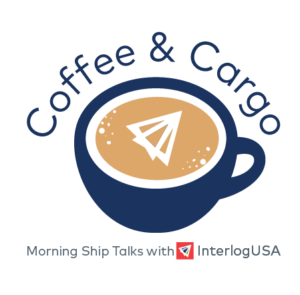Competitive Edge
September 8th, 2021
Stay Current with Interlog’s Weekly Newsletter:
Sign up for our next Coffee & Cargo webinar –> CLICK HERE
Ocean Freight Market Update
Asia –> North America:
Rates: Most origins have increased in rates once again as September rates are in full swing. A mid-September GRI is expected
Space: Very Limited
Equipment Availability: Limited/Under Tight Capacity
TIPS: Depending on port congestion, consider trucking cargo to nearby origin ports with earlier departure bookings. Rerouting around LA/LB for Asia origins will alleviate congestion at the port. Plan ahead as COVID and congestion will be factors going into this winter.
Europe –> North America:
Space: Limited – Expect delays as Hurricane Ida has significantly set back the Port of NOLA.
Capacity: Tight – Fewer bookings to inland rail ramp destinations
TIPS: With capacity tight, it is recommended to book on premium services. Recommend to book 4-5 weeks in advance. Avoid Port of NOLA if possible as they reopen and work on their backlog.
North America –> Asia:
Space: Standard
Capacity: Steady for Standard Containers
TIPS: Recommend to book 2-3 weeks in advance. Standard shipments are OK, however any shipments that require special equipment may be delayed due to a shortage.
Did You Know?
It would take around 18 months to walk the entire Great Wall of China
Freight News
Port of Los Angeles and Long Beach Update and 2022 Predictions
Any hope that was left for the congestion in California ports to improve, has vanished, with no optimism ahead that it’ll improve. Late in August, French carrier CMA CGM stated that capacity constraints “are expected to continue until the first half of 2022.” With America’s import system already stretched to the limit, it looks like it will have to handle even higher volumes, reported by Freightwaves.
Freightwaves is anticipating that carriers will be forced to cancel more sailings as terminal berths max out and ships get stuck at anchor, even more cargo will get “rolled” (pushed to a future sailing), and importers will face longer delays and even less slot availability as they scramble to build inventories with the holidays coming up.
At the ports of Los Angeles and Long Beach, an average of 16 container ships were at berths or at anchor on any given day. Two weeks ago on Sunday, there were 76 box ships either at berths, at anchor or drifting, which is 4.8 times the pre-COVID level. The Marine Exchange data shows that LA/LB terminals are accommodating an average of 28 ships each day this month, with all the rest being overflow that heads to a make shift “parking lot” in San Pedro Bay.
Imports still have a long way to go, as U.S. retail sales continue to outpace inventory restock. Jason Miller, an associate professor of supply chain management at Michigan State University’s Eli Broad College of Business, showed data that retail inventories are now substantially higher than pre-COVID, but sales have been so high that the inventory-to-sales ratio is far below where it was pre-COVID. The level of inventory to sales actually fell slightly in June, to 0.94 months of sale, according to Freightwaves.
A Small Passenger Carrier Named Eastern Airlines Takes on a New Freighter-Light Strategy to Tackle the Demanding Air Cargo Market
Eastern Airlines is taking a new approach to make space for air freight. They will be doing this by removing seats from used aircrafts. According to Freight waves , the company announced on Wednesday that they are buying 35 Boeing 777 widebody aircrafts. Purchasing was done through a lease that incorporates insurance, staffing, and upkeeping. The goal is to have them ready to aid Ecommerce deliveries by the start of 2022.
Freight Waves also states that in an interview with the CEO named Steve Harfst, the most time & cost-efficient thing to do is only take out the seats. This allows them to fit smaller packages to fill their niche targeting of ecommerce cargo, making there no need to free up more space for bigger cargo.
One of the concerns is the more packages means more work to fill up the bay. With the shortage of workers at airports due to Covid, this will pose a potential issue and could lead to higher per unit costs. But with demand being so high and operations through passenger doors becoming more efficient, Eastern Airlines doesn’t seem to be worried about it.
Airlines are getting rid of passenger planes that have been converted to freighter flights. As airlines don’t want to deal with the potential damages that can occur to the planes interior due to freight moving around. Eastern Airlines can now be a third-party service for the airlines to outsource to for this issue.
Sign up for our
industry answers
Our team works to provide valuable, unique, and relevant content to assist you in finding solutions. Sign up now.
Explore Other Services
Air Freight
Lorem ipsum dolor sit amet, consectetur adipiscing elit donec consectetur semper nuncin molestie consectetur adipiscing elit donec .
Cargo Insurance
Lorem ipsum dolor sit amet, consectetur adipiscing elit donec consectetur semper nuncin molestie consectetur adipiscing elit donec .

